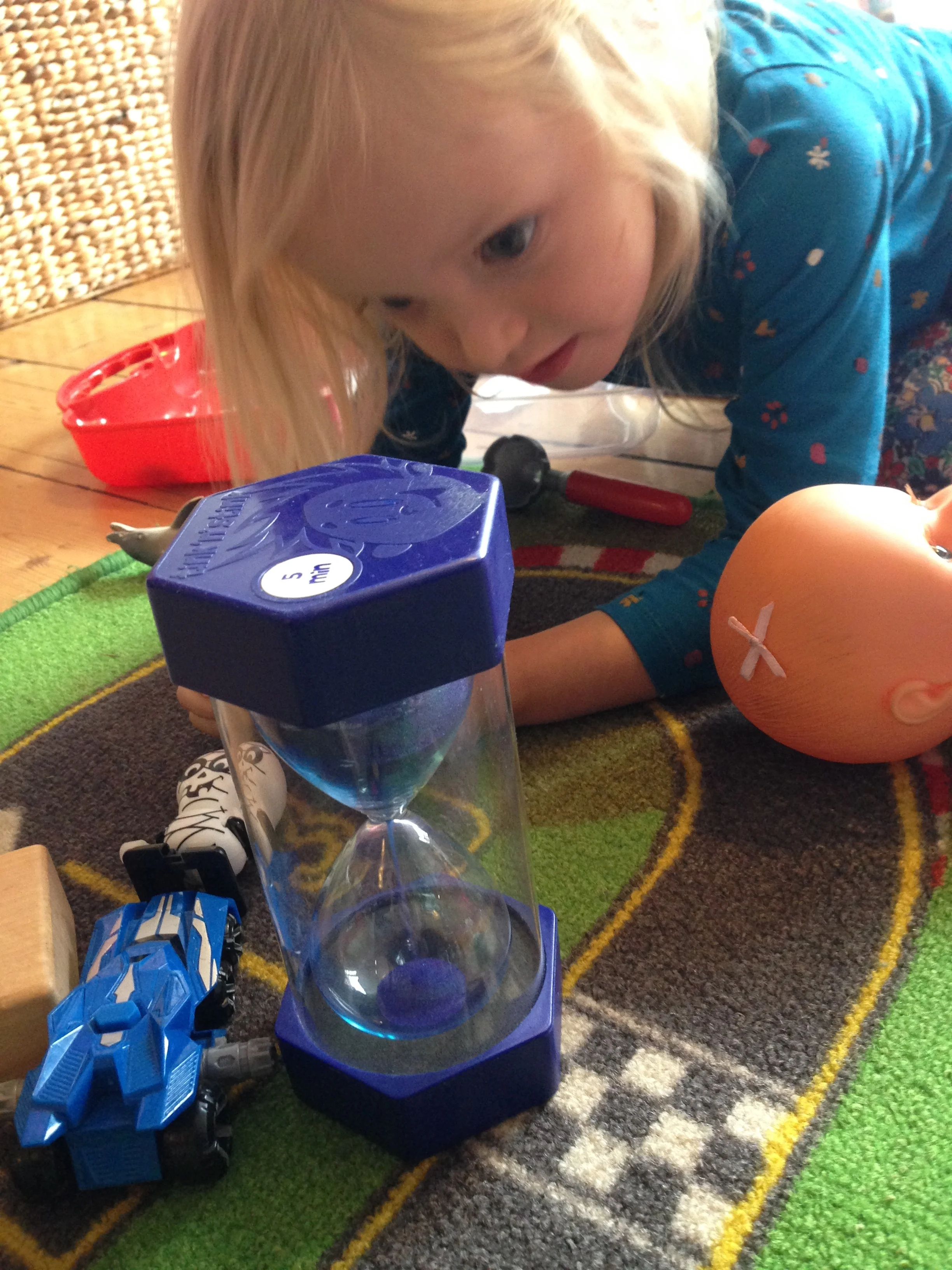As some parents have recently bought some sand timers we thought it would be useful to let you all know how we use them.
Here is the Amazon link to buy them and we would recommend a 1, 3 and 5 minute timer.
We have a tendency as adults to regularly say to our children “in a minute”, “just wait two minutes!” etc. Children have no idea how long a minute is, let alone 2 minutes and saying this often aggravates the situation. The sand timers provide a visual representation of a period of time and children respond incredibly well with them when they’re used correctly.
We use them mainly to help children share toys, to encourage patience, for transitions and for ‘Thinking Time’.
Here are some examples of situations and the language we use at Karibu -
Sharing a toy
“If you get the blue sand timer (5 minute) and ask them if you can have the toy when the sand timer has finished.”
Transitions
“In 3 minutes, when the yellow sand timer has finished we will stop and wash our hands ready for breakfast.”
To develop patience
“Yes, I will read you a story when the 5 minute sand timer has finished”
‘Thinking Time’
“I’ve told you three times that you must walk inside. Please get the sand timer and have some ‘Thinking Time’.”
“It’s unkind to hit another child. If you get cross/angry/sad then you must talk to them. If they do not listen then you must ask a grown-up for help. Please get the sand timer, sit down here and have a think about what you can do when someone is making you feel cross/angry/sad.”
During this period they sit in a quiet space away from anything they can touch or play with. No attention or eye contact is given to the child. After the sand timer has finished we talk to the child about what they can do next time and why, e.g. “I need to walk inside to stay safe”. If the incident involved another child then they are encouraged to say sorry once they have calmed down.
We hope this makes sense however if you do have any questions please just ask.
Simon Jay


